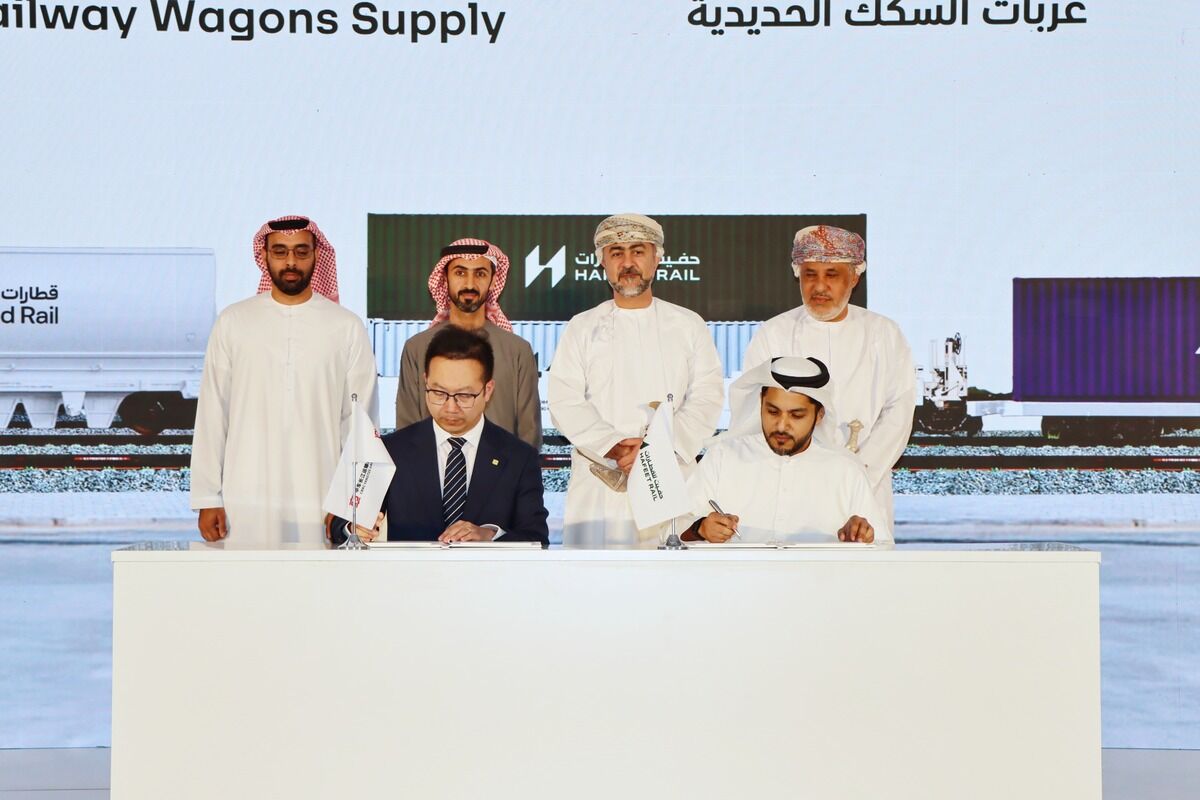The UAE and Oman finalized several strategic agreements in Sohar, North Al Batinah Governorate, aimed at advancing the shared railway network project. Among these is a long-term commercial deal between Hafeet Rail and Emsteel to transport and export raw materials from Oman to the UAE. Additionally, two primary contracts were established with Larson & Toubro (L&T) and PowerChina for the design and construction of railway facilities in Oman. A second agreement was signed with China Railway Construction Corporation Limited (CRCC) for the supply of freight wagons, Oman News Agency reported.
In October 2024, Hafeet Rail further finalized bank financing for the Hafeet Rail network project which connects the Port of Sohar to the UAE. The total financing is OMR577 million ($1.5 billion) backed by Omani and Emirati banks and regional and international financial institutions.
Unified transport network
The OMR961 million joint initiative by Hafeet Rail is a huge vote of confidence from a diverse group of local, regional and international lenders on the project’s importance to both countries. This Omani-Emirati railway project is the first segment of a unified transport and logistics network that will benefit the region economically and competitively. It also involves Etihad Rail, Oman Rail and Mubadala, with Etihad Rail and ASYAD Group having the largest stake in the venture.

Read more: UAE-Oman Hafeet Rail project signs $1.5 billion bank financing deals
Financial advisory and support
Standard Chartered was the Lead Financial Advisor and has been advising on the project’s debt raising since 2023, while First Abu Dhabi Bank was the Co-Financial Advisor. The project finance debt was raised from a mix of UAE, Omani, regional and international banks across both conventional and Islamic financing structures in AED and OMR currencies.
Moreover, the banks involved in the financing are from the UAE and include Abu Dhabi Commercial Bank, Arab Bank, Commercial Bank of Dubai, First Abu Dhabi Bank, National Bank of Kuwait, Standard Chartered Bank, Abu Dhabi Islamic Bank and Ajman Bank. Nine Omani banks participated in the financing including Ahli Bank, Bank Dhofar, Bank Muscat, National Bank of Oman, Oman Arab Bank, Ahli Islamic Bank, Bank Muscat (Meethaq Islamic Banking), Bank Nizwa and Alizz Islamic Bank.
Engineering and infrastructure
The railway will also be 238 km long with 60 bridges – some of which will be 34 meters high – and 2.5 km of tunnels. It will connect 5 major ports and various industrial and free zones across the two countries. Furthermore, a single freight train on this network can carry over 15,000 tons of cargo or around 270 containers. Sectors that will benefit include mining, iron and steel, agriculture, food, retail, e-commerce and petrochemicals.
Operational efficiency and speed
Once operational, the railway will reduce travel time between Abu Dhabi and Sohar to 100 minutes, with freight trains operating at 120 km/h and passenger trains at 200 km/h with capacity for 400 passengers.

Alignment with national visions
The Hafeet Rail project supports the UAE’s Centennial Plan 2071 and Oman Vision 2040 for economic growth, social cohesion and sustainable development of both countries. The joint network is named after Jebel Hafeet, which has historical and strategic importance and aims to boost trade, tourism and connectivity between the two countries and the region.








